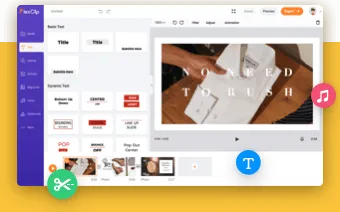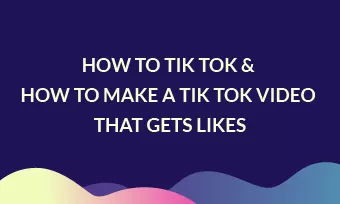Converting Chinese text to speech offers you an easy way to turn written Chinese content into realistic Chinese AI voices for your video projects’ voiceovers, audiobooks, E-learning materials, podcasts, product explainers, etc.
If you are looking for a versatile Chinese text-to-speech converter that can help you effortlessly convert Chinese text to speech, we’ve got you covered!
In this tutorial, we will walk you through the 4 best ways to easily convert Chinese text to speech with idiomatic Mandarin, Cantonese, and Taiwanese accents online. So, you can use realistic AI Chinese voices for YouTube videos, audiobooks, podcasts, and more.


Here’s what you’ll learn:
Also, read the 6 best AI video script generators.
1. FlexClip
If you are looking to convert Chinese text to speech in Mandarin, Cantonese, etc. for your podcast shows, voiceovers of YouTube videos, TikTok, Instagram Reels, or to convert Chinese ebooks, and your blog posts to Mandarin/Cantonese text to speech voices for language learning and promo videos, etc. then the user-friendly and feature-packed FlexClip AI video maker deserves to be your first pick.
Convert Chinese text to speech in a breeze with FlexClip online.
Best Features to Convert Chinese Text to Speech with FlexClip:
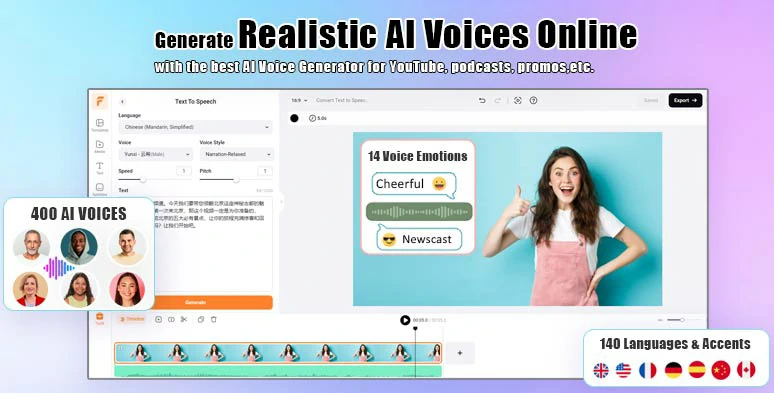
Effortlessly convert Chinese text to realistic Chinese AI voices with FlexClip.
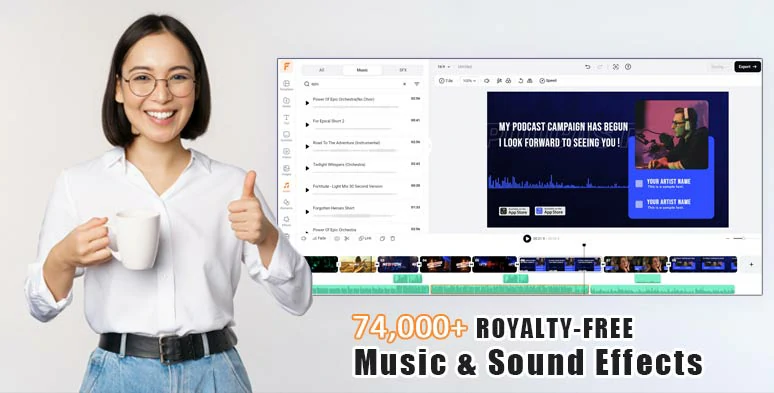
Use vast royalty-free music and sound effects to breathe new life into Chinese AI voices.
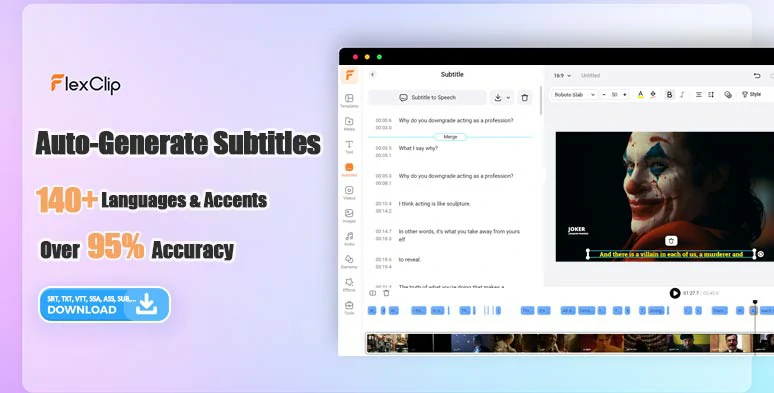
Auto-generate burned-in subtitles for your video projects.
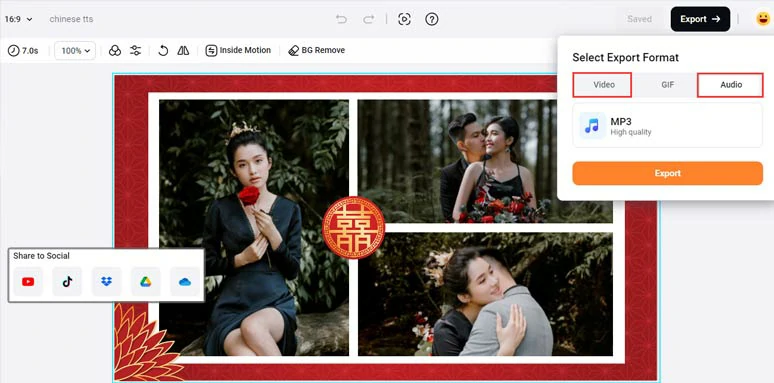
Save Chinese text-to-speech projects in MP3 or MP4 format for easy sharing.






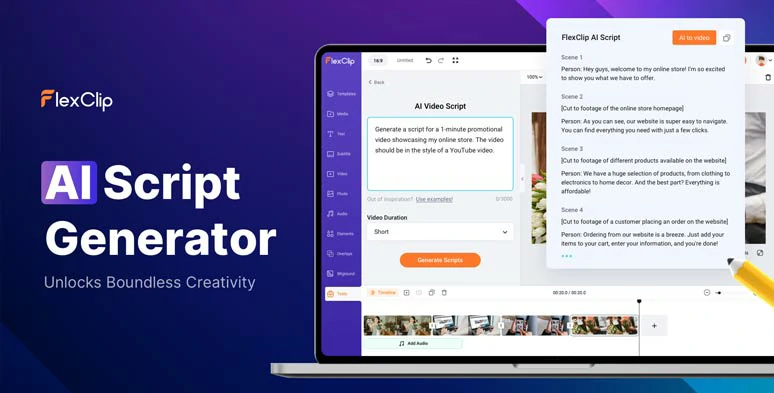
Use AI video script generator to write scripts for your videos.
How to Convert Text to Realistic Chinese AI Voices by FlexClip:
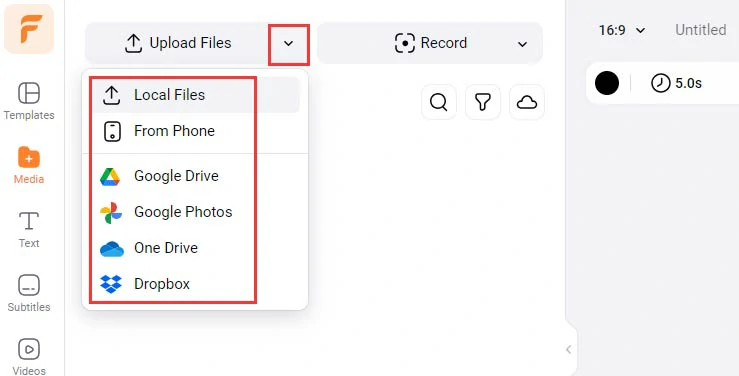
Upload your images, clips, and audio to FlexClip.
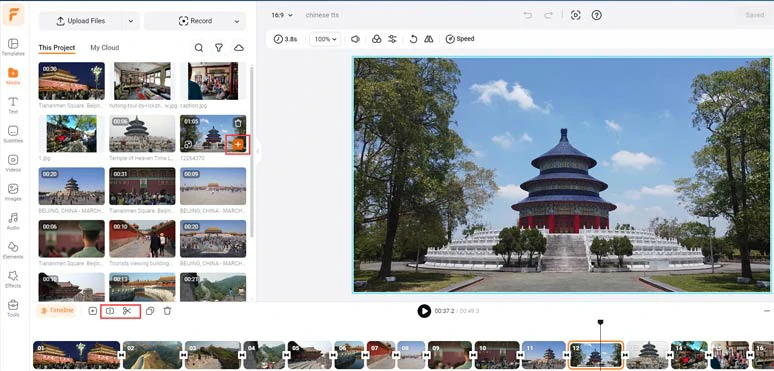
Add clips to the timeline and make the rough edits.
Click the Tools tab > Text to Speech > click the language drop-down menu and select Chinese and its variant needed > preview and select an ideal Chinese AI voice avatar > set the voice style (friendly, chat, poetry-reading, newscast, affectionate, etc.) and voice speed, and pitch > copy and paste Chinese text into the text block > hit the Generate button.

Select the ideal Mandarin Chinese AI voice and set the voice style to convert Chinese text to speech.
Now, you can preview the AI-generated Chinese text-to-speech voice > hit the “Save to Media” button to save the Chinese AI voices to the media library. Meanwhile, an extra MP3 audio file will be saved to your computer for backup. Pretty handy!
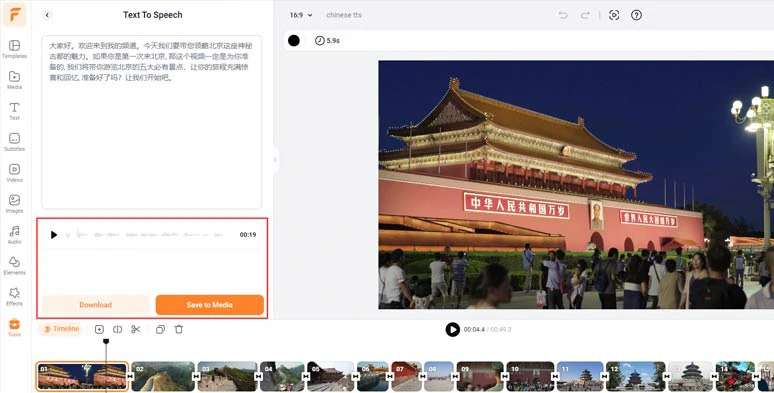
Preview and save the Chinese AI voices to the media library.
A bonus tip is that you can manually insert commas and periods between words to add natural pauses to the Chinese AI voice, making your Chinese text-to-speech hyper-realistic.
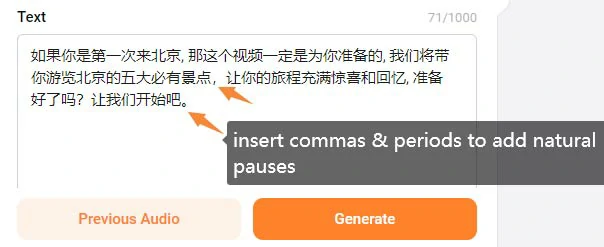
Insert commas and periods to add natural pauses to Chinese AI voices.
Next, repeat the same step to convert the rest of the text to Mandarin or Cantonese Chinese text-to-speech > head back to the Media tab > Audio> align all the Chinese AI voices to the right video scenes. You can trim or split audio tracks and adjust their volume as well.
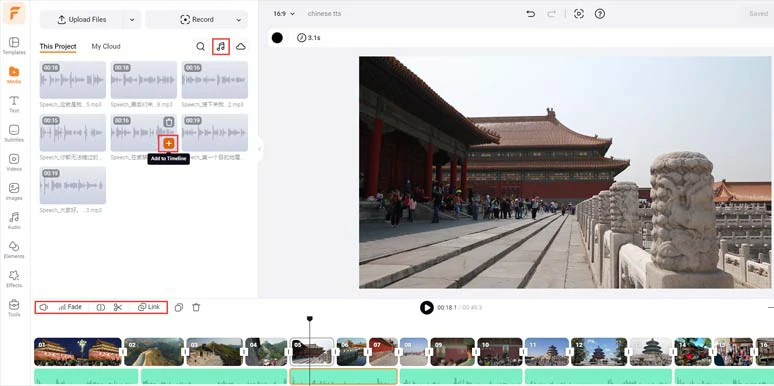
Align the Chinese AI voices with the right video scenes.
BTW, if you don’t have video scripts, you can click Toos tab > AI video script > type in Chinese text prompts to ask ChatGPT to write Chinese scripts for you. Also, read how to write great ChatGPT prompts for AI video scripts.
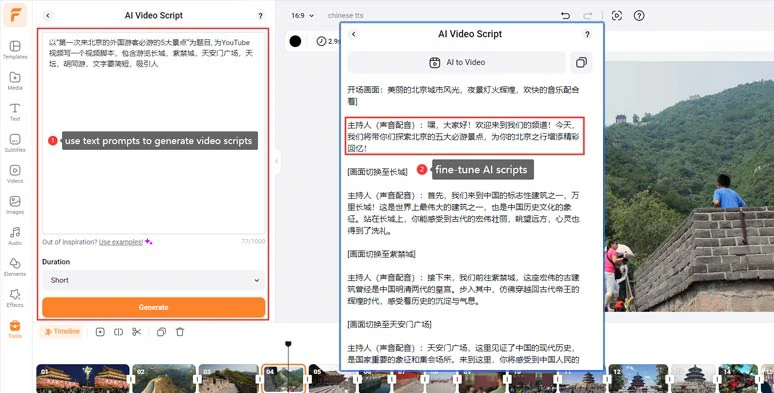
Effortlessly generate AI video scripts using the AI video script generator.
To make sure your video content is accessible to all viewers, it’s advisable to add burned-in subtitles to your videos. With FlexClip’s AI auto subtitle generator, you can do it with the click of a button and the accuracy is up to 95%.
Just click the Subtitle tab > Auto AI Subtitle > select Chinese (Mandarin, simplified) or other Chinese accents > hit Next > set the style of the subtitle, which can be changed later> hit the Generate button.
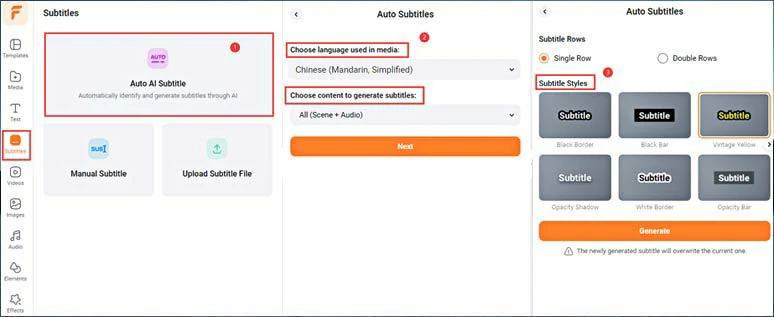
Auto-generate subtitles for Chinese text-to-speech video projects.
Later, you can proofread the auto-generated subtitles > correct any misspellings > fine-tune the text font, text color, text size, alignment, background fill, opacity, etc.
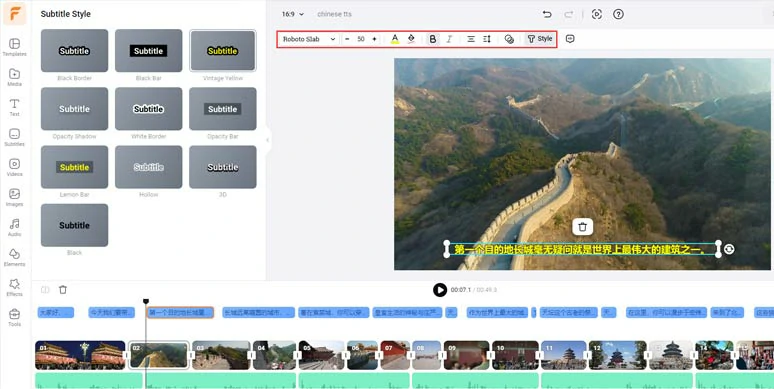
Proofread the auto-generated subtitles and fine-tune the style of subtitles.
Alternatively, you can click the download button to save the subtitles in SRT, TXT, SUB, CSV, VTT, SBV, ASS, or SSA formats to your computer for other repurposings. Besides, if one subtitle looks too long, you can press “Enter” to split it or click the Merge tool to combine two short subtitles. Pretty helpful!
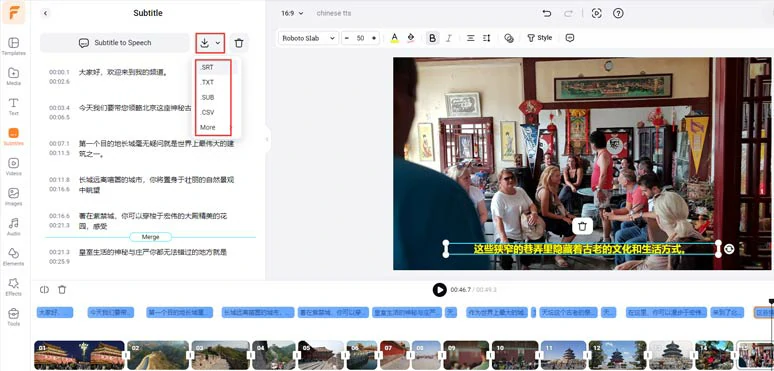
Download subtitles in SRT, TXT, or other formats for repurposing.
Click the Text tab > scroll down to select from 1,000+ readymade and editable text animations, such as YouTube/TikTok/IG titles, lower thirds, news titles, social media profile titles, speech bubbles, quotes, call-out titles, search bars, etc. You can easily customize the text styles, text font, text color, size, alignment, opacity, duration, etc.
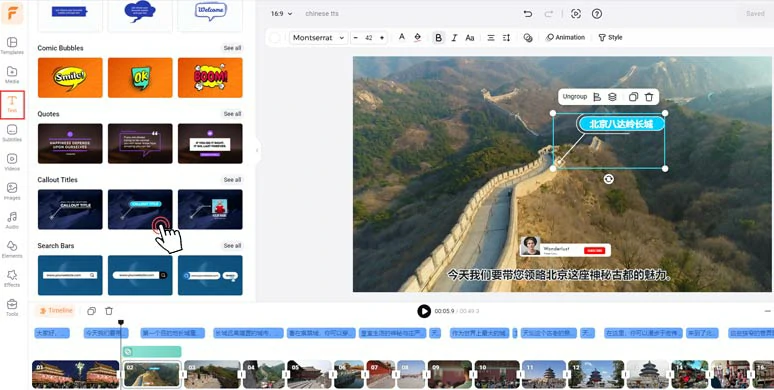
Add editable text animations and customize the text styles.
With the text selected, click the Animation tool and you can easily animate the text with styles for the text animation reveal, such as typewriter, cinematic glitter, glossy blur, bounce, fade, burst, fade, etc. Pretty helpful!
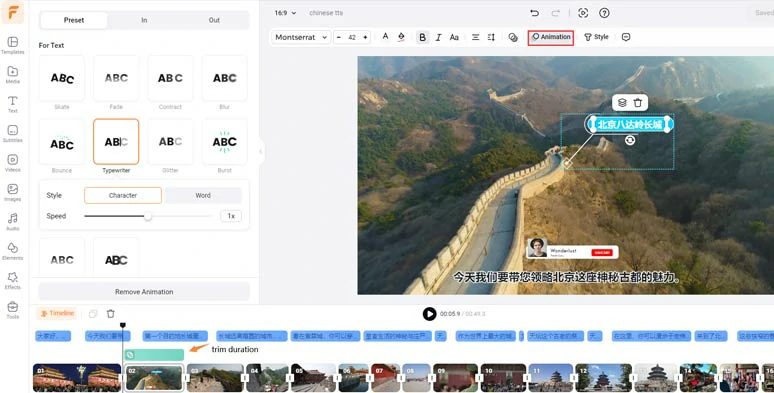
Easily animate the text with styles.
Click the Audio tab and type in keywords to choose from 74,000+ royalty-free music tracks and sound effects to create the vibes and rhythm for your video. You can layer multiple audio tracks to create depth or use sound effects like “whoosh”, “swoosh”, and “riser” for transition, and text reveal. You may also easily trim and split audio and apply fade in/out effects for a seamless audio transition.
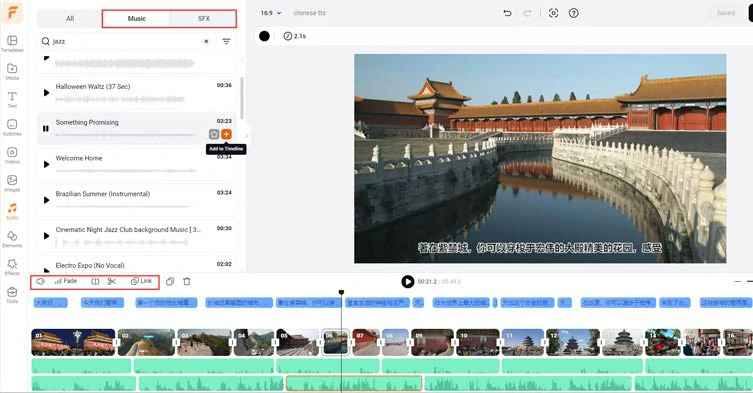
Add royalty-free music and sound effects to create the vibes.
Alternatively, you can even import a copyright-free video > add it to the timeline > right-click on it > select “Detach Audio” to extract audio from videos for audio mixing in your video project. Pretty flexible!
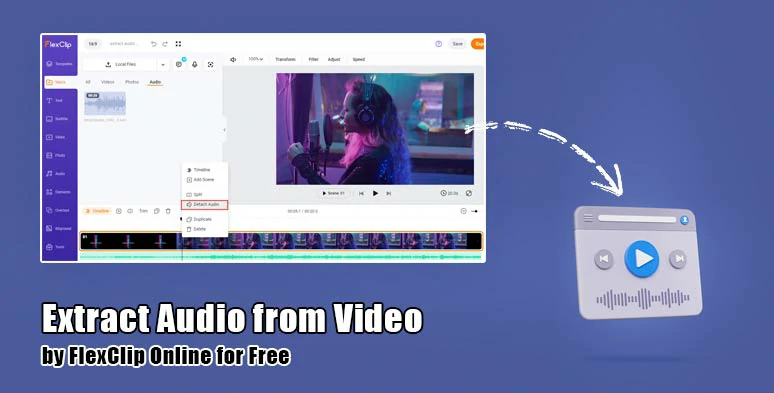
Extract audio from video for audio mixing and sound design.
To further spice up your video, you can add trending transitions, such as liquid, splash, circle, glitch, zoom in/out, etc., or apply creative effects overlays in the Effects tab, like snow, fire, lightning, cinematic film grain, bokeh, lens flare, etc. to create the cinematic vibes, while animated and funny GIPHY stickers, and illustrations, emojis, etc. are also available in the Photo and Elements tab. Just feel free to explore and unlock your creativity.
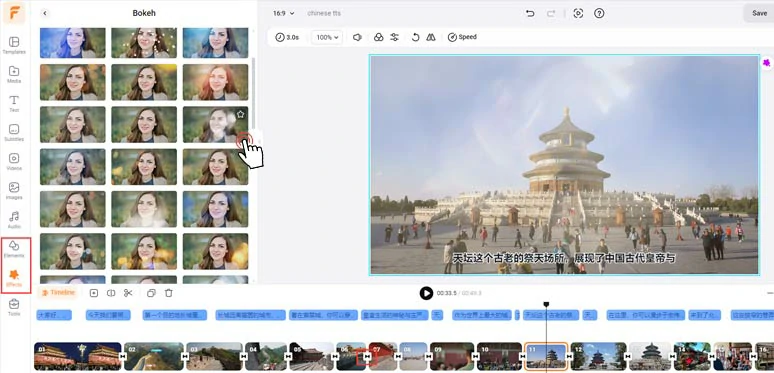
Spice up videos with creative effects overlays, transitions, and other visual effects.
Done with the editing. You can click the Export button to save the 1080P MP4 video to your PC or directly share it to YouTube, Google Drive, One Drive, Dropbox, or even TikTok; if you only need an audio-only format for your podcast show, you can directly save the video project as an MP3 file. Besides, a clickable link is also available for your blog posts, newsletters, or other repurposing.
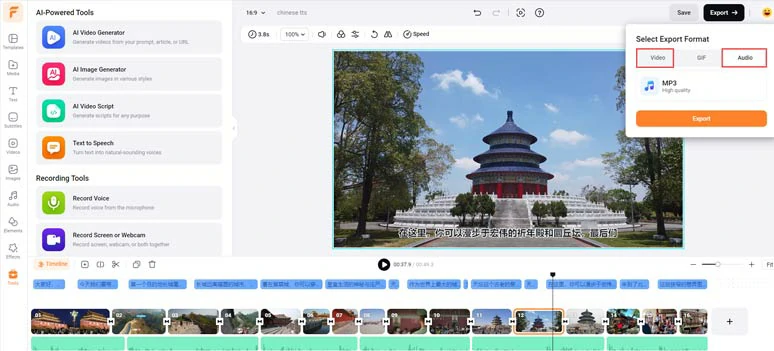
Save the video project in MP3 or MP4 format.
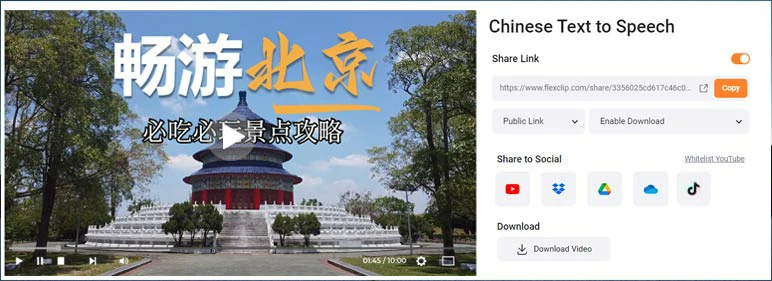
Easily share and repurpose your video content.
Downside:
2. Murf.AI
If you mostly need ultra-realistic Chinese text-to-speech for your podcasts, audiobooks, E-learning materials, presentations, etc., Murf.AI, a professional AI voice generator that utilizes AI’s deep learning technology for making lifelike Chinese AI voice, is another go-to choice for you.
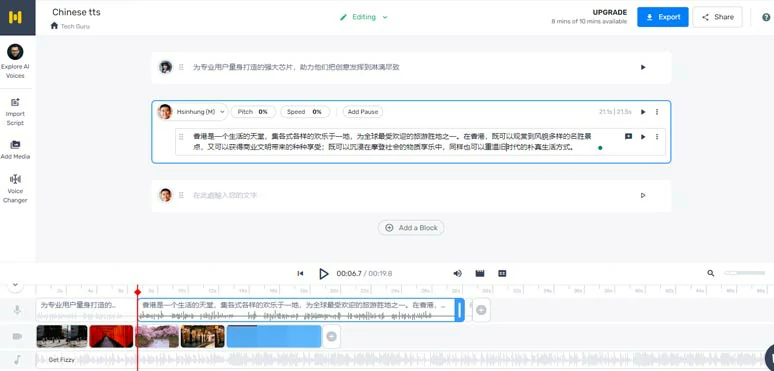
Convert Chinese text to speech by Murf.AI.
Best Features to Convert Chinese Text to Speech with Murf:
How to Convert Text to Realistic Chinese AI Voices by Murf:
Alternatively, you can click the Import Script tab to upload a text file to convert text to speech in Chinese in batch.
Downside:
3. Narakeet
If all you need is to convert Chinese text to speech without too many edits, then another easy-to-use online Chinese text-to-speech converter you will love is Narakeet. It’s a user-friendly text-to-speech generator that allows you to directly convert Chinese text or document files to lifelike speech in Chinese AI voices. The intuitive interface is second-to-none.
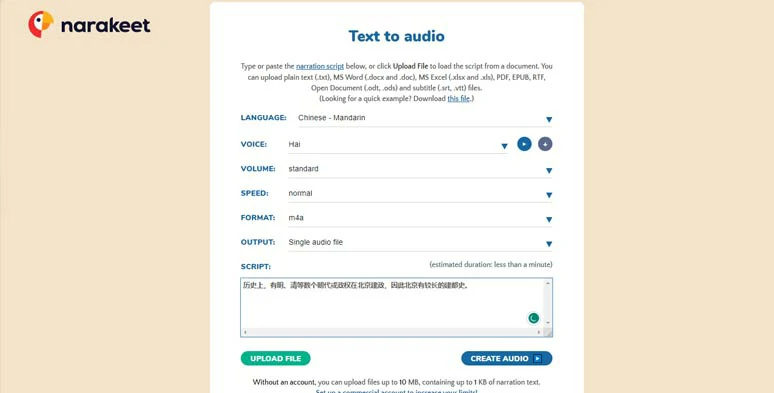
Convert Chinese text to speech by Narakeet.
Best Features to Convert Chinese Text to Speech with Narakeet:
How to Convert Text to Realistic Chinese AI Voices by Narakeet:
Downside:
4. Speechify
Last but not least, if you only need a Chinese text-to-speech tool to help you convert Chinese text to human-sounding Chinese AI voices for listening, such as e-books, blog posts, emails, PDFs, so you can ease the eye strain or read your documents with ears while doing chores or workouts, then using Speechify, a versatile and cross-platform text to speech reader, is exactly what you’ve been looking for.
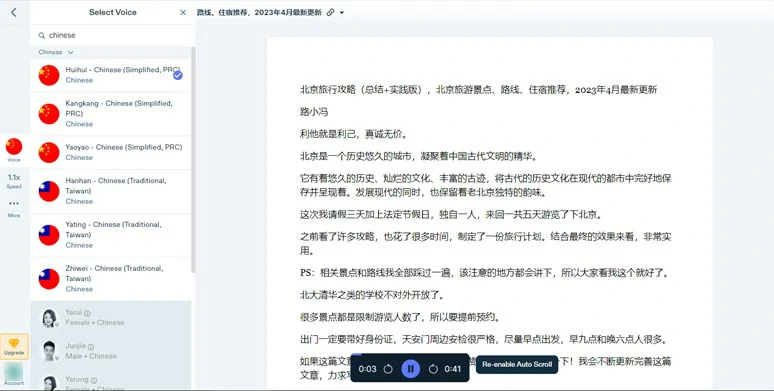
Convert Chinese text to speech by Speechify.
Best Features to Convert Chinese Text to Speech with Speechify:
How to Convert Text to Realistic Chinese AI Voices by Speechify:
Downside:
Now, It's Your Move
Converting Chinese text to speech makes it easy for you to transform written Chinese text to more sharable audio content for audiobooks, YouTube video voiceovers, E-learning materials or multitasking, etc. So, please feel free to experiment with the Chinese text-to-speech converters mentioned above and share this post on Facebook or Twitter and tell us which one works best for you. Cheers!


